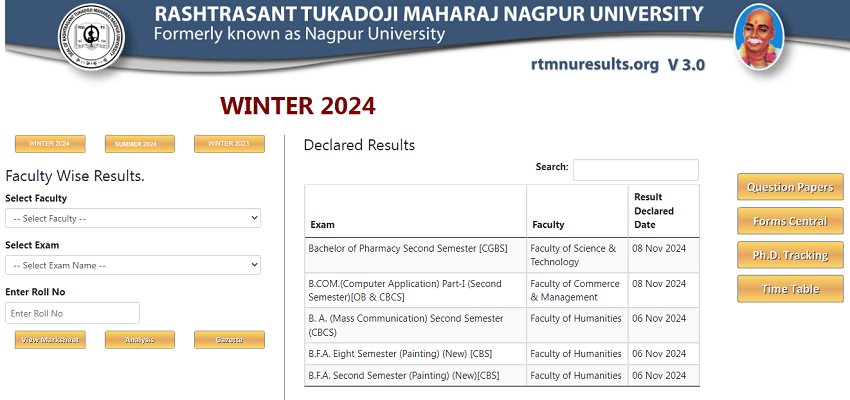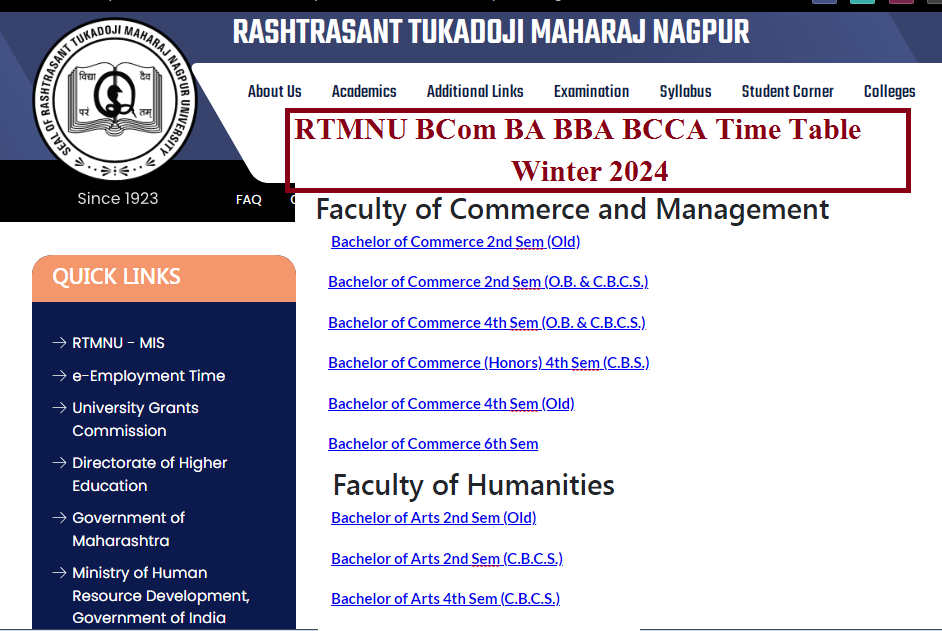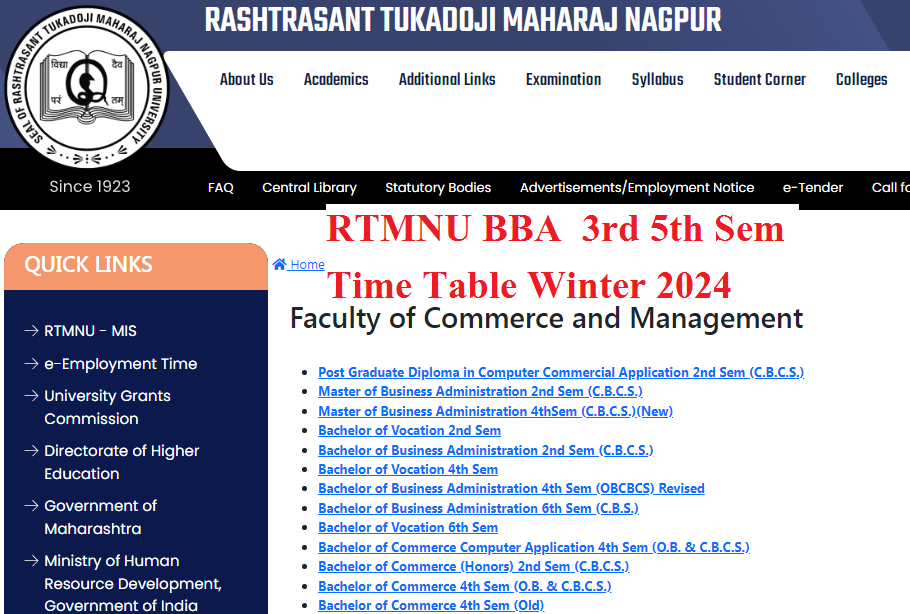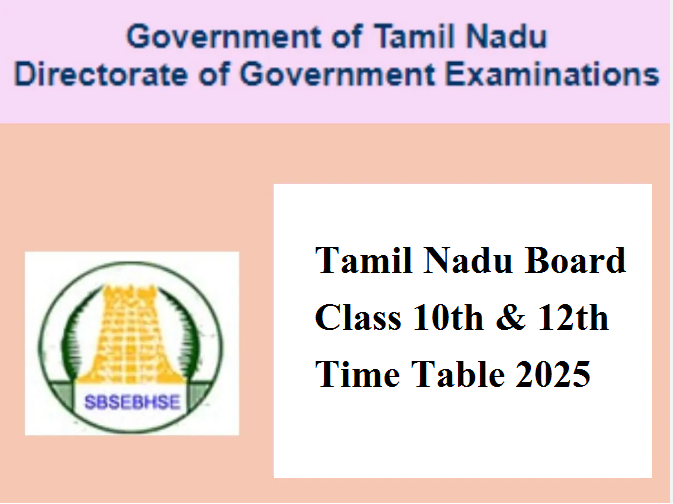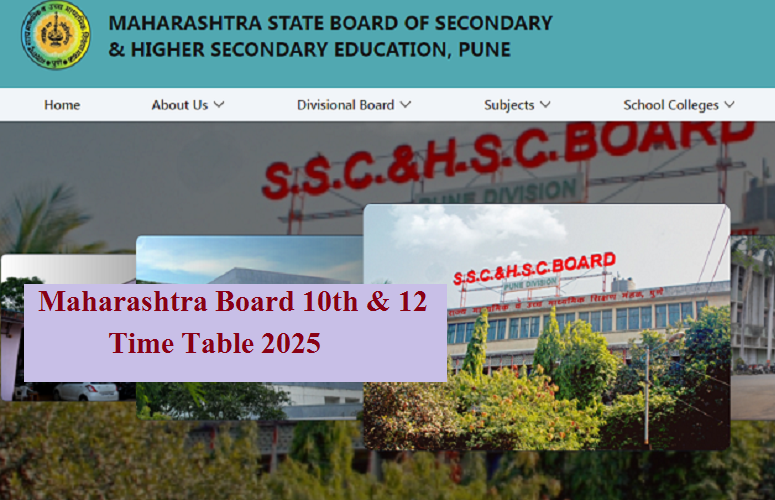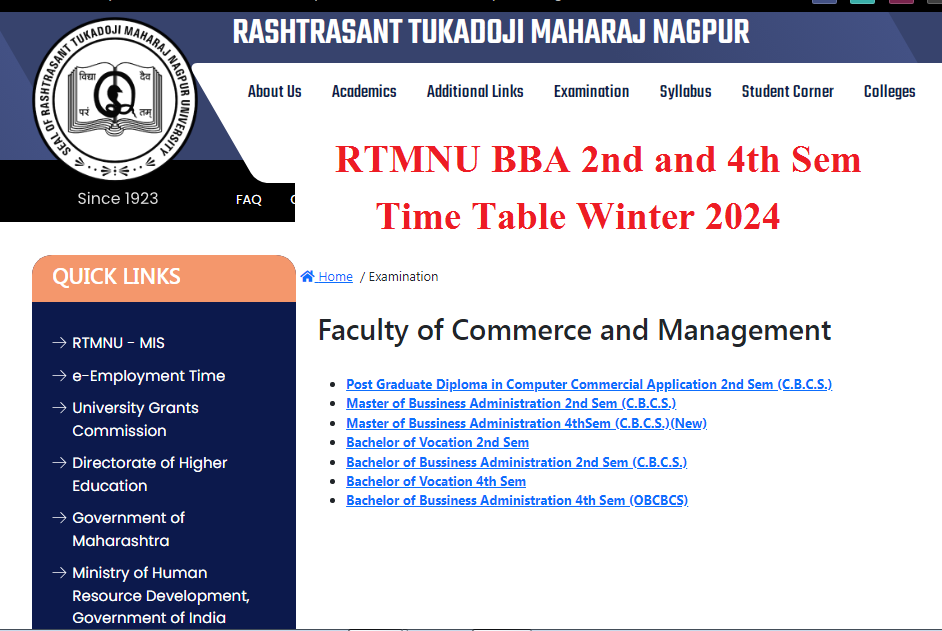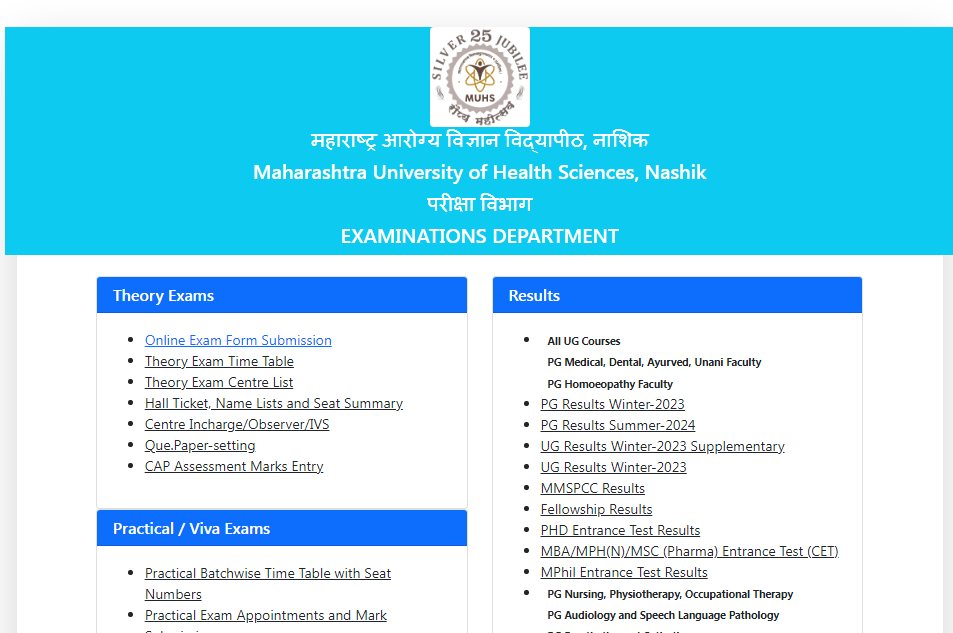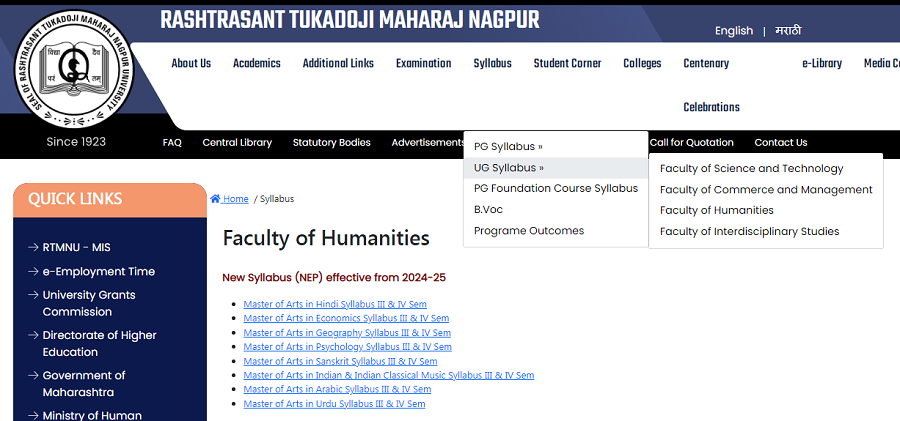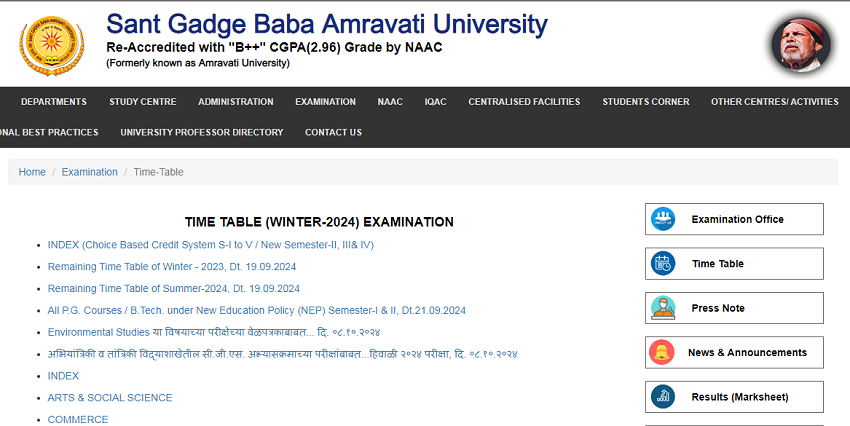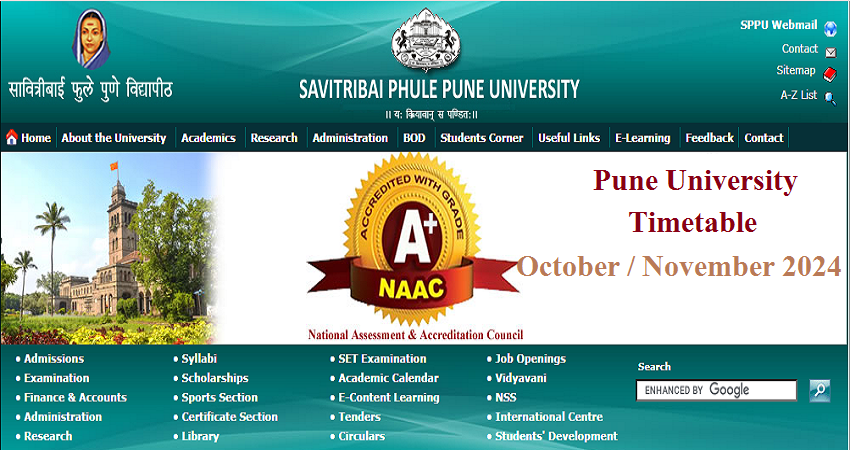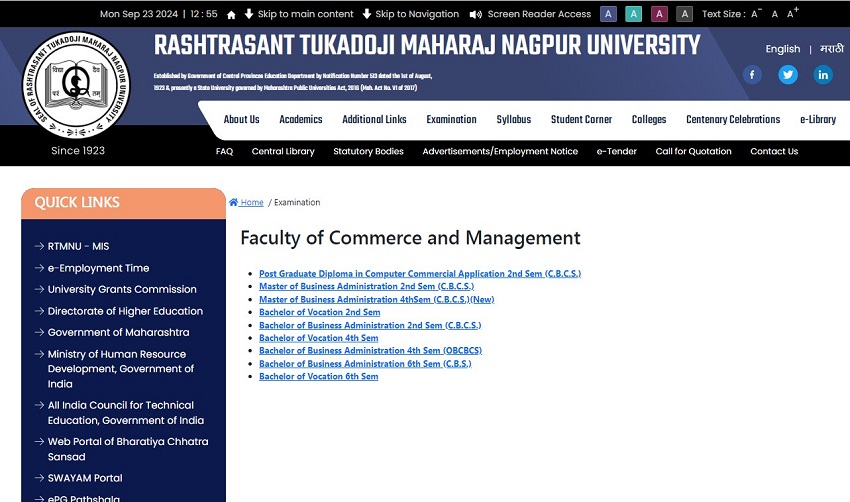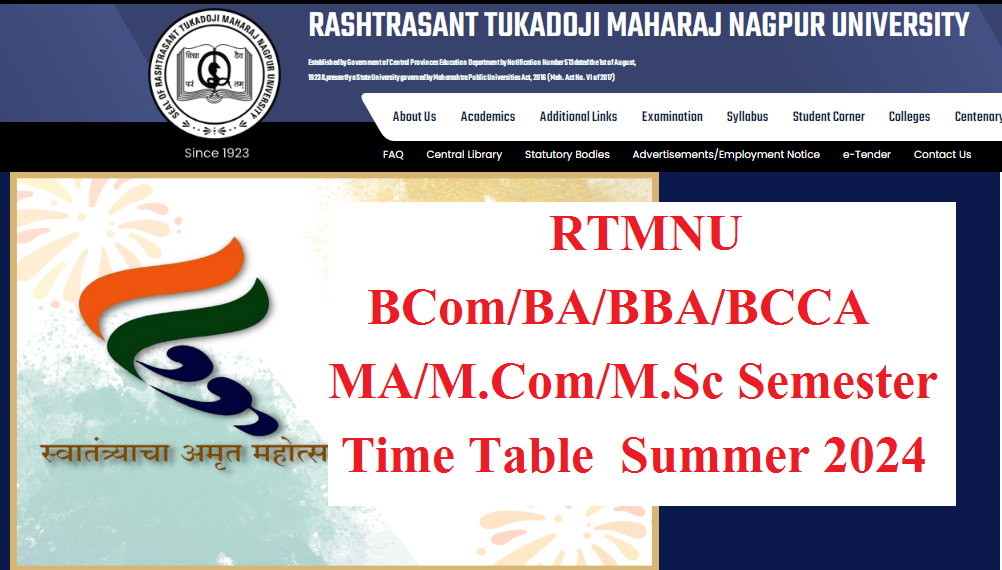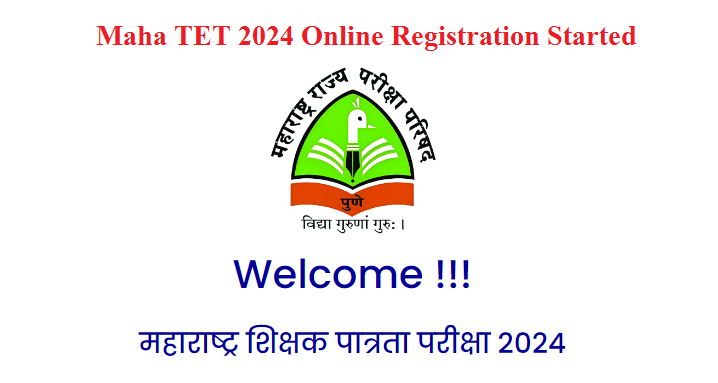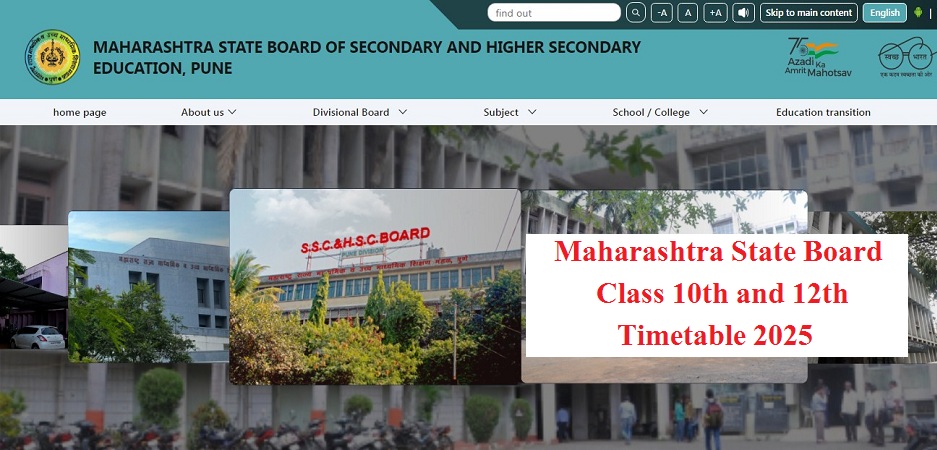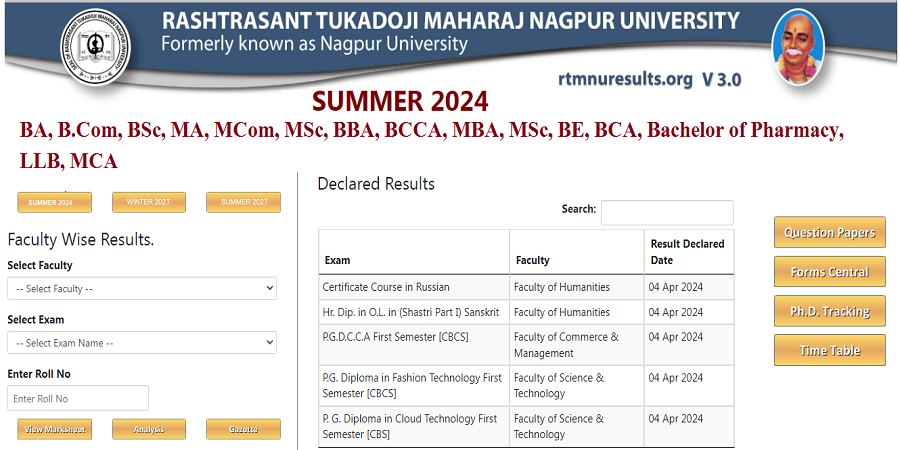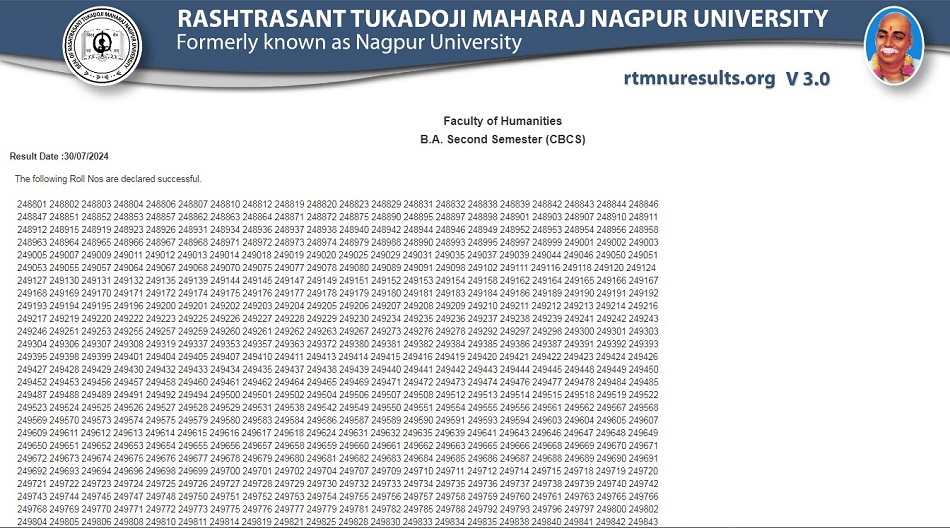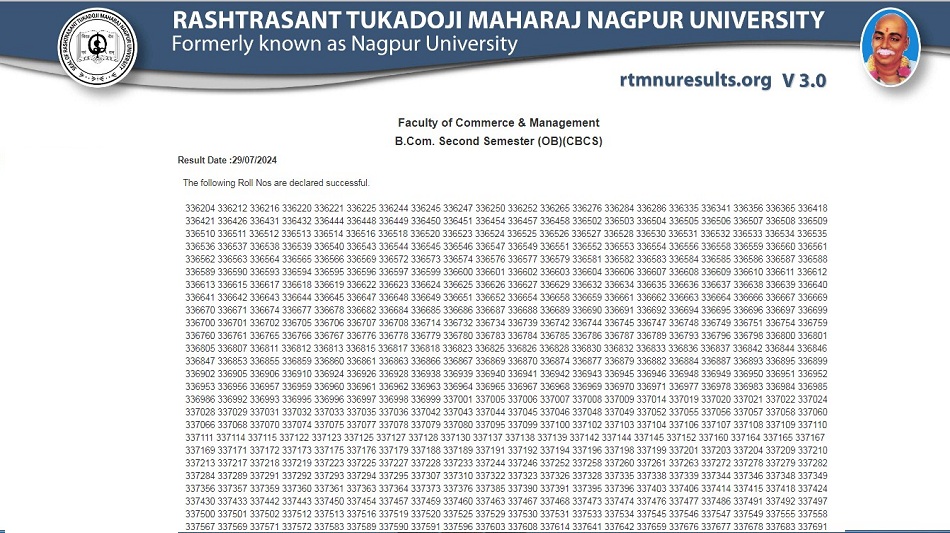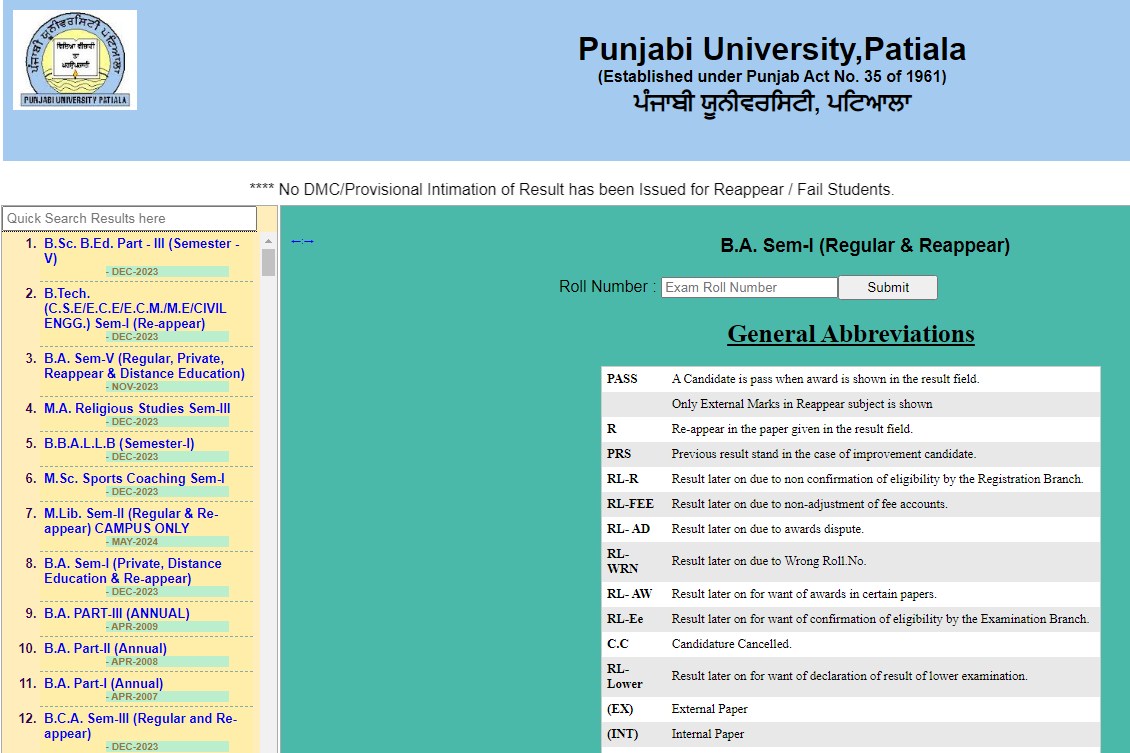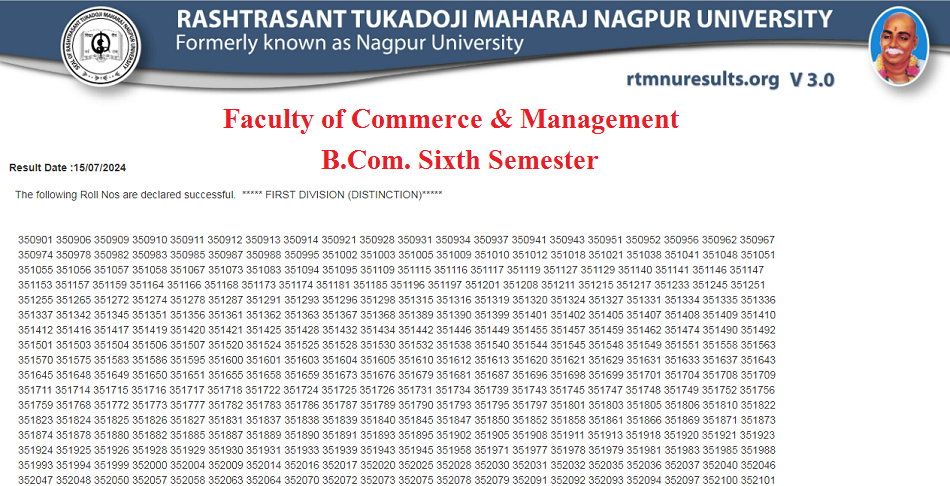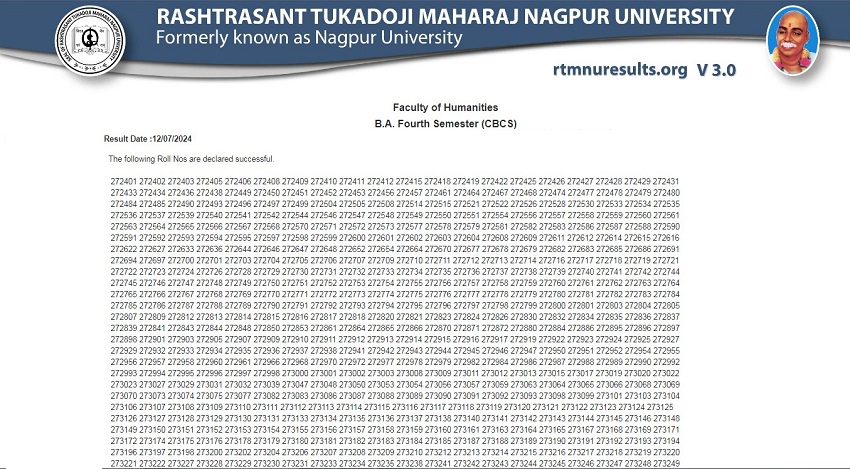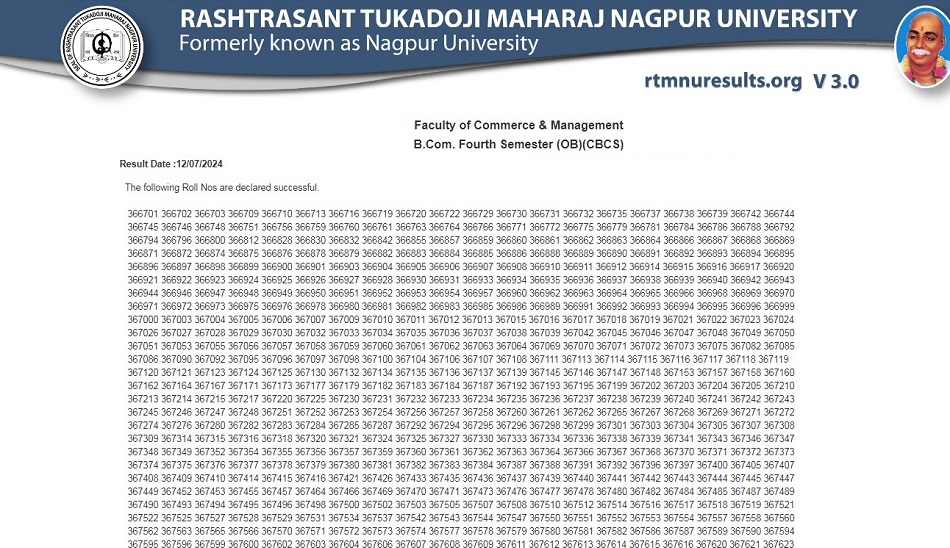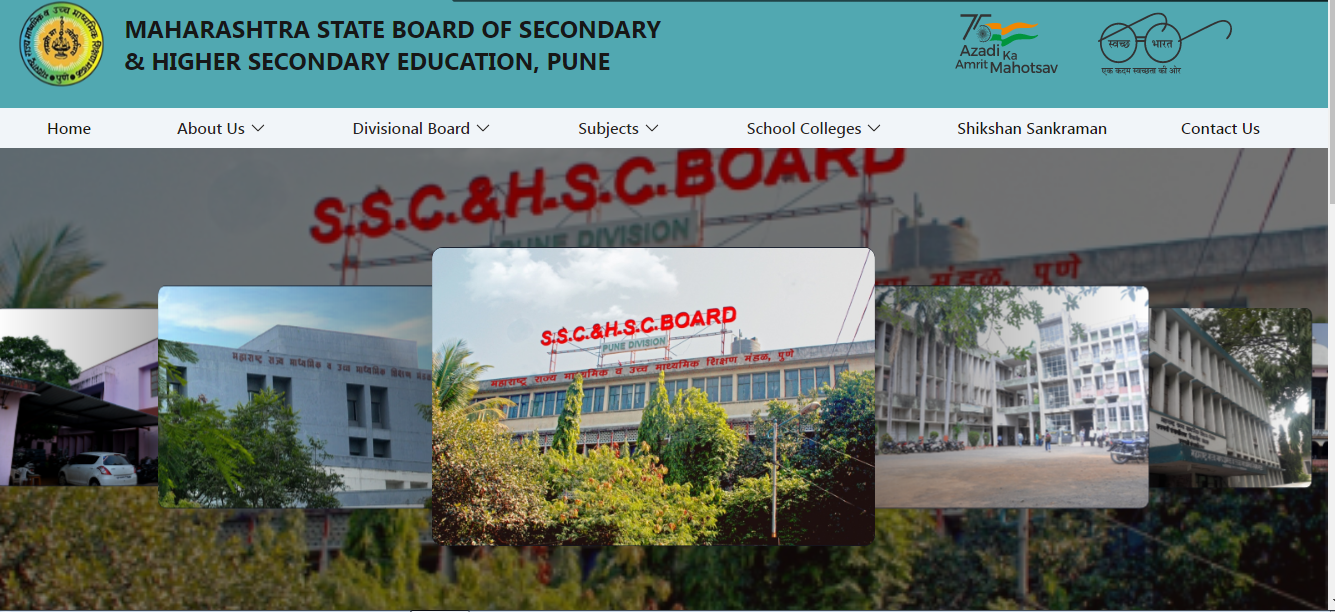RTMNU Revised B.Arch Sem 1 Syllabus 2021
RTMNU Revised B.Arch Sem 1 Syllabus 2021
RTMNU Revised B.Arch Sem 1 Syllabus 2021 | Nagpur University B.Arch Syllabus Part 1| RTMNU First Year B.Arch Syllabus
Nagpur University New Syllabus 2021 is available for Downloading. The latest RTMNU Revised B.Arch Sem 1 Syllabus 2021 is published by Nagpur University. The students looking for this syllabus can Download the PDF Syllabus from given respective Links. We keep adding More details about this Syllabus on this page. We given below the Details updated new syllabus. Students of RTMNU are requested to go though the detail syllabus. You can also download the PDF of syllabus from given link. For More updates keep visiting us.
RTM Nagpur University Revised B.Arch Sem 1 Syllabus 2021 -RTM Nagpur University B.Arch First Semester New Revised Syllabus is given below for Downloading. The students can Download the respective Syllabus from following given details. Just go through the given links & read the given syllabus carefully. Nagpur University First Year New Semester Online Detail syllabus given below.
RTMNU Revised B.Arch Sem 1 Syllabus 2021
Architectural Design I
Objectives: The primary objective shall be to develop in students the understanding and relevance of human scale and space formation, elements of built form and its role in spatial realms.
1. Anthropometry:
a. Study of Human dimensions, concept of percentile in Indian standards, space required for various simple activities, circulation spaces.
2. Form and Space:
a. Volumes, elements of volumes, enclosure of space, semi-enclosed spaces, defining space by elements, light and shade as contributing factors, color, texture & form, view, visual relationship. Properties of forms and their impact
on spatial experience.
3. Elements of built form:
a. Basic Elements: Walls, Floors, windows, doors, staircase, façade, etc.
b. Ancillary Elements: Courtyards, balconies, canopy, patio, sitouts, water bodies, pergola, etc.
c. Relevance of all such elements on architectural expression and spatial quality.
Small modules of short design projects based on developing the understanding of above mentioned topics.
Reference
Ching Francis D. K., Form Space and Order.
Ching Francis D. K., A Visual Dictionary of Architecture.
Pierre Von Meiss -Elements of Architecture from form to place.
Yatin Pandya- Elements of Space Making
RTMNU Revised B.Arch Sem 1 Syllabus 2021
Allied Design Studio I
Objectives:
Developing skills in manual presentation techniques, use of various media of presentation, Principles of 2-D & 3-D compositions, Principles of Design.
Visual Art:
Visual Art is aimed at providing knowledge and understanding of various visual arts and its importance. It further aims at developing freehand drawing and rendering skills in different medium and using it as tool of expressing ideas visually.
Unit I:
Introduction to basic elements of visual arts – point, line and plane. Study of Visual properties of 2-Dimentional forms both geometrical and non-geometrical surface and visual texture and optical illusion.
Introduction to principles of organization/composition- Repetition, Variety, Radiation, Rhythm, Gradation, Emphasis & Subordination, Proportion, Harmony, Balance.
Unit II:
Free hand line sketching and drawing of natural and manmade objects. Study of shades and shadows. Sketching of structures with architectural importance using different medium.
Unit III:
Study of classification of colours with different hues, values, and shades. Colour wheel and colour composition, properties of colour.
Sessional Work – Plates, Sketches and models to understand basic principles
of visual composition.
Creative Exercises of 2d to 3d composition.
RTMNU Revised B.Arch Sem 1 Syllabus 2021
Building Construction and Materials I
Objectives:
To develop understanding of building materials and its application in construction of various building elements. The subject also aims at introducing students with design ability for a certain building element integrating with architectural space and demand of time and place.
Unit I:
Introduction to construction as a subject and its relevance to Architectural Design. Construction and the Logic of stability as its basis, construction principles with respect to structural stability. Support and supported elements, concept of span and span – loading co-relation.
Building elements, types and subtypes, basic understanding of elements fromfoundation to roof vis-à-vis its purpose, function, utility and necessity.
Unit II:
Building materials, Categories – Natural, Processed, Manufactured and Designed. Availability, Composition, General know-how with respect to physical, chemical and structural properties; utility and criteria for selection in design and
construction of various elements of building. (Market survey and study of catalogues)
Manufacturing of clay bricks, Bricks made from other materials and blocks. Building Stones, its quarrying process, preservations, dressing and artificial stone(s).
Manufacturing of Lime, Cement – its setting time; importance and need for curing.
Aggregate Coursed and fi�e, sources, grading and selection criteria, various uses and mix.
Concrete types (based on materials), Preparation and mix – criteria, its various uses, Manufacturing of Glass, various types, forms, applications.
Unit III:
Basic Structurl Systems, Load Bearing, Frame Structure and Composite structure, load transmission, suitability, merits, demerits etc. Introduction and understanding of various Subsystem such as Horizontal, Vertical and Foundation, Sub systems with respect to stability, utility and its application in building design and construction.
Unit IV:
Masonry, definition and types; purpose / fuction their role in building desgn and construction. Standard terminology used for masonry work A complete study of principles and rules of Brick Masonry (up to 2 brick thick) and
Piers. A complete study of principles and rules of Stone Masonry and Pillars. Composite masonry and masonry out of various walling blocks.
References
‘Building Construction’ by Mackay W. B., Vol. 1 – 4
‘Building Construction’ by Barry, Vol. 1 – 5
‘Construction Technology’ by Chudley, Vol. 1 – 6
‘Building construction Illustrated’ by Ching Francis D. K.
‘Engineering Materials’ by Chaudhary.
RTMNU Revised B.Arch Sem 1 Syllabus 2021
Architectural Graphics I
Objectives: To introduce students to architectural drawing techniques with due emphasis to scale, annotations, labeling and dimensioning.
To enable students to express simple three dimensional objects and building components through technical drawings, using various graphic projection systems such as orthographic, Isometric and Axonometric projections.
Unit I: Introduction to graphic language and its components
Line types: meaning and application Architectural Lettering and dimensions in techniques Architectural annotations and conventions including representation of various building materials and building components Graphic scales and their application
Unit II: Plane and Solid geometry
Introduction to graphical construction of various plane geometrical shapes. Introduction to various projection systems used in Architectural drawing; such as Orthographic, Isometric and Axonometric projections to draw and represent various three dimensional geometrical objects/forms.
Unit III: Scale Drawing
Scale drawing (plan/s section/s and elevation/s) of a simple G+1 building of sufficient size (drawings of which has to be provided) to demonstrate use of various metric scales, conventions and standard annotations especially indicating the vertical circulation & toilet details in section.
Sessional work: Sketches, notes, tutorials, tests and presentations.
References
Ching Francis D.K.: Architectural Graphics
Gill Robert: Rendering with pen and ink
H. Joseph and Morris: Practical plane and solid geometry
RTMNU Revised B.Arch Sem 1 Syllabus 2021
Structural Design & Systems I
Objectives: This course provides students with a basic knowledge of structural systems used in buildings. Emphasis will be on structural concepts vis-à-vis stability of forms rather than intricate numerical calculations while dealing with different structural concepts. The subject intends to familiarize students to concepts of basic structural mechanics.
Unit I: Overview of the Structural System in Architecture.
Study of types of loads and types of beams. Load bearing structure, RCC frame structure, Steel trusses in residential & industrial buildings, With suitable examples from historical and contemporary architecture.
Unit II: Introduction to Structural Mechanics
Introduction of forces, composition, resolution, moments and couples, Resultant of forces, Concurrent and non-concurrent co-planar force systems, Principle of moments, Varignon’s theorem.
Unit III: Principle of equilibrium. (2D Elements)
Basic principles and conditions of equilibrium, study of Lami’s theorem and Free Body Diagrams. Study of structural support reactions Study of reactions of simple support, hinged support, roller support and fixed support.:-
Unit IV:: Geometric Properties of plane sections
Centre of gravity Moment of inertia (second moment of area) – section modulus, radius of gyration, polar moment of inertia.
Unit V: Analysis of Trusses
Perfect frames (Method of joints)
Sessional work: Sketches/ Notes/ Tutorials &Presentations
Desirable: Site visits to develop better understanding of above.
Laboratory exposure wherever possible.
References:
• Khurmi, R. S.(2006). A Textbook Of Engineering Mechanics (SI Units). New Delhi: S.Chand And Co Ltd.
• Reddy, K. Vijaya Kumar; Kumar J. Suresh.(2011). Singers Engineering Mechanics Statics And Dynamics
(SI Units). Hydrabad:B.S Publications.
• Ramamrutham , S. : Narayanan, R.(2008). Engineering Mechanics. New Delhi: Dhanpat Rai Publications Ltd
• Shah, H.J. ;Junnarkar, S.B.(2012). Mechanics of Structures. Anand: Charotar Publishing House Pvt. Ltd.
• Singer, FerndinandL.(1975). Engineering Mechanics Statics & Dynamics. New Delhi :Harpercollins Publishers.
• Ching, Francis D.K.; Onouye, Barry S. Building Structures Illustrated: Patterns,
Systems And Design. New Jercey: John Wiley And Sons.
• K. G. Rajashekarappa, S.S. Bhavikatti (1994), Engineering mechanics, New age international publication, Mumbai.
RTMNU Revised B.Arch Sem 1 Syllabus 2021
History of Civilization
Objectives: To provide an introduction to the architecture of early civilisations as an expression of art and culture of that place. To understand and interpret basic needs and lifestyle as determining factors for growths of early settlements.
Unit I: Prehistoric Architecture-
Evolution of architecture. A study of primitive people, shelters, settlements. Examples: Menhirs, Dolmens, Trilithons, Stone circles, Stone hedge, Cave dwellings. Catal Huyuk
Unit II: Nile Valley Civilization:
The impact of the context, culture and society on art and architecture of the Egyptian Civilization. Evolution of tombs, valley of Kings, necropolis.Unit III: Indus Valley Civilisation: The impact of the context, culture and society on art and architecture during Early Indus settlements in Mehrgarh, Harrapa, Mohenjo Daro, Dholavira.
Unit IV: Euphrates & Tigris river valley Civilisation:
The impact of the context, culture and society on art and architecture of Asayrian, Sumerian, Mesopotamian
and Babylonian period.
Unit V: Yellow River Civilisation:
The impact of the context, culture and society on art sculpture and Architecture during Prehistoric, Xia Dynasty, Shang Dynasty and Zhou Dynasty
Unit VI: Vedic Architecture and Settlements:
Rise of cities, Mahajanapadas, introduction to scripture
Exercises:
Design of exercises to understand, analyze, interpret, synthesize the study of historical structures to develop understanding of architecture
Test:
one at midterm and one at end of term to be conducted at institute level. The questions should be framed with least emphasis on factual reproduction.
References
History of World Civilisations by J.E. Swain.
A Short History of the World – H. G. Wells
RTMNU Revised B.Arch Sem 1 Syllabus 2021
Computer Application I
Objectives: This subject is to empower students with computer software useful for architects to enhance the skills of presentation, drafting and coordination of design and other subjects. To learn presentation software for enhancement of architectural drawings, sketches and convey ideas through presentations.
Unit I: M.S. office – Basics of M.S. office software, M.S word, PPT presentation or equivalent software and Excel
Unit II: Photoshop etc. to enhance presentation skills with help of software.
Workshop I
Objectives:
To develop skills to understand various tools, processes and material.
Understanding various basic tools used for carpentry joinery and fabrication.
Understanding workshop rules, safety norms and care in handling various manually operated and motorized tools.
Basic understanding of wooden joints, evolution of joints, needs of joints, making simple wooden joinery parts.
Understanding various building materials and their tools used for cutting, joining and extension. Handling materials like wood, marble, steel, MS, plywood, POP, Aluminum etc.
Understanding nailing, screwing, riveting and their various conditions and types of applications.
Expression of forms – By handling various materials.
Sessional work: Model Making.
Evaluation shall be done on following heads:
Simplicity, honesty of material, concept, translation of concept, detailing,
workmanship and expression
Elective I
Appreciation of Art and Architecture/ Numerical Ability/
Presentation Skills/ Sketching and Rendering/ Public Speaking/
Institutional Project 1
Note: Following are the suggestive contents; institutes have freedom to formulate the
content as per their school of thought
Appreciation of Art and Architecture
Key Words: Types of Arts, identification, appreciation, Visual perception, Art and
Design, Modern, Contemporary Architecture.
Objectives:
The objective of the course is to understand and appreciate art and
architecture in terms of its form, content and context through the study of works of art
over history in order to develop sensitivity towards aesthetics and techniques
developed over the period which plays a important role in architecture.
• To introduce the vocabulary of Art, Architecture and the principles.
• To inform students about the various art forms through the ages within the cultural contexts.
• To study Modern Art and the new directions that evolved in the 19th and 20th centuries.
• To inform the production of art in the Indian context through history and the contemporary manifestations.
Sub topics :
1. Evolution of art and architecture.
2. Introduction to Art Appreciation. The ways of seeing Art.
3. Art and Design- Historical perspective.
4. Expression in Art and Design
5. Indian Art -Pre and post- Independence, Contemporary Indian Art.
6. Indian Art and Architecture- pre and post – Independence, Contemporary Indian
Art and Architecture.
7. Role and impact of art and architecture. (History, Expression and relation).
Sessional Work:Plates, Assignments, workshops, Visits
References:
The Making of Indian Art – Tapathi Thakurta,
Kala Swadhane- M.H.Krishnaiah,
Contemporary Indian Sculptures- Dr. Shivji Panikar
Cantanese, A. J. and Snyder,
J. C. (1988). Introduction to Architecture. Ching, F. D. K.,
Jarzombek, Heidegger,
M. (1993). The origin of the work of Art-Basic writings. Vitruvius,
Translation: Morris, H. M. (1960)
RTMNU Revised B.Arch Sem 1 Syllabus 2021
Numerical Ability
Key Words: Mathematics and architecture, Nature and mathematics, Geometry
Objectives:
The objective of this course is to inculcate the interesting application of mathematics in architecture without using the complex mathematical operations and formulae.
The focus is to make the students understand the mathematics that exhibit in nature.
The students are introducing to Fibonacci series, Fractals, Tessellation and its application in architecture.
Further students are introduce to the repeated geometric patterns like squares and circles which may overlapped or interlaced to form intricate complex Islamic Jalis in one of the Exercise.
The Theories of Golden sections and fractals formed the basis for understanding the fundamentals of basic geometry as found in nature. In later stage, Students are made to work upon evolving patterns that fallows certain rules through exercises of tessellations.
Sub Topics:
1. Mathematics of architectural aesthetics.
2. Using mathematic as tool for designing.
3. Analyzing the mathematical concept related to architecture.
Sessional Work: Assignments, Plates, Workshops
References :
• The Divine Proportion: a Study in Mathematical Beauty,by H. E. Huntley
• The Golden Ratio and Fibonacci Numbers, R. A. Dunlap
• Geometry of Design, Kimberly Elam
• Fibonacci and Lucas Numbers and the Golden Section, Steven Vajda
• A mathematical history of the golden number, Roger Herz-Fischler
• The Golden Ratio: The Facts and the Myths, Francis D. Hauser
Presentation Skills
Key Words: Presentation ,Communication, Presentation Techniques, public
speaking, Group Discussions.
Objectives: The main objective of this course is to develop the skill of students by Introducing fundamental techniques of Visual representation and to equip them with basic principles of representation which will enhance the quality of graphical language for architecture. This subject will also improve the skill of delivering and engaging crowd.
• To improve on convincing skills of students.
• To enhance the Visualization Skills of students.
• To Improve Advertisement Skills.
• Introduction to public speaking.
• Visual Aids in public speaking.
• The psychology of audience.
Sub Topics:
1. Introduction to Presentation skills and public speaking(methods, use & application, delivering presentation).
2. Presentation Techniques.(Manual skills and digital presentation techniques)
3. Mediums of Presentation (Verbal, Illustrative, Digital,3Dimensional).
4. Software.
Sessional Work:
Assignments , Workshops ,Focused Group Discussions, Plates
References :
Adrian, D. and Christopher J. (2000). Language in Use,
Dinsmore, G. A. (1968). Analytical Graphics,
Edward, J. F. and Lee, J. (2000). Sketching and Rendering
Key Words: Visual thinking , representation, Geometric Drawings, Rendering
techniques.
Objectives:
Students to equip with fundamental techniques of sketching and rendering.
To develop a medium for thinking and explorations.
Sub Topics:
1. Learning Sketching, Drawing
2. visual thinking, Design principles and representation techniques.
3. Understanding the complexity of forms.
4. Geometric Drawings and Projections.
Sessional Work:
Assignments , Workshops, Plates
References :
Robert Gill, Rendering with pen and Ink,
Thomas & Hudson Publishers, 1993
Public Speaking
Key Words: Speaker, Audience, topic, Skills.
Objectives:
To develop the skills to address crowd.
Visual aids in public speaking.
The psychology of audience.
Sub Topics:
1. Introduction to public speaking
2. Visual aids in public speaking.
3. The psychology of audience.
Sessional Work:
Workshops, Focused Group Discussions.
Institutional Project 1
Institutional project aims at encouraging institutions to explore different areas.
Institution would have freedom to explore into multidisciplinary activities which would
explore into other creative disciplines and inter-disciplinary activities.
This would help student of architecture to have insight into different spectrums of
people, place, culture, society, technology etc.
Institution has entire freedom to detail out the assignments to be conducted under
this elective.


